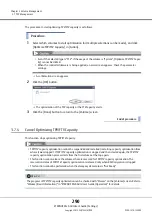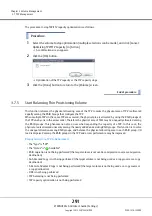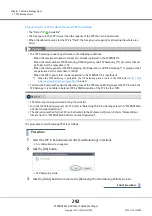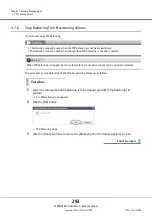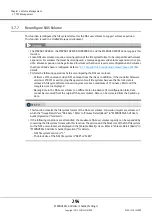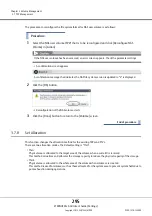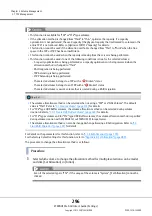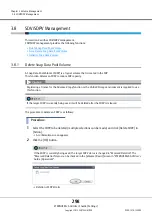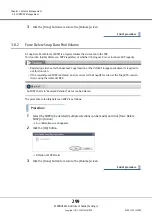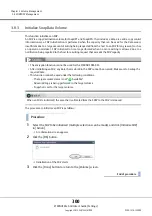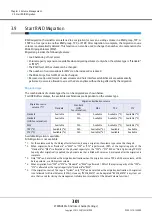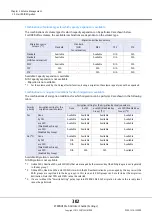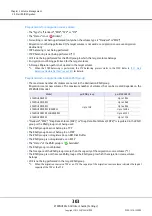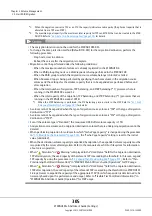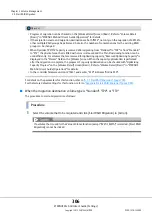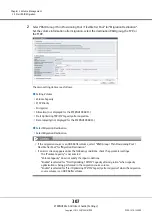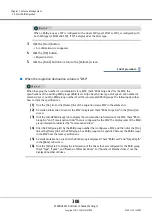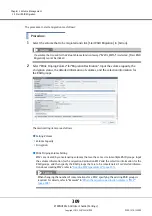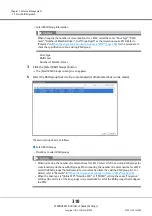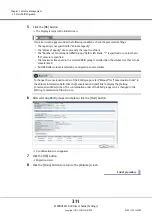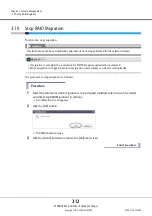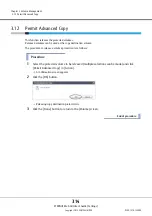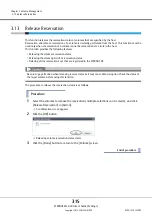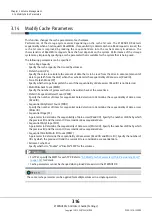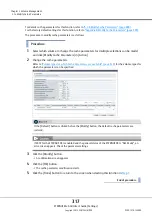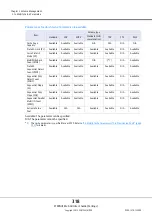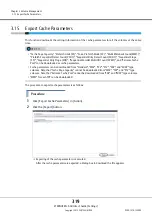
Chapter 3 Volume Management
3.9 Start RAID Migration
ETERNUS Web GUI User’s Guide (Settings)
Copyright 2015 FUJITSU LIMITED
P2X0-1270-13ENZ0
304
Requirements for RAID groups that configure a migration destination WSV
•
"Standard", "WSV", "SDV", or "SDPV" is registered in the RAID group or the RAID group is not being used
•
The "Status" of the RAID group is "
Available"
•
The maximum number of volumes are not created in the RAID group (*1)
•
The RAID group does not belong to a TPP
•
The RAID group does not belong to an FTRP
•
The RAID group is not registered as an REC Disk Buffer
•
The RAID group is not registered as an EXCP
•
The RAID group is not blocked
•
LDE is not being performed in the target RAID group
•
When using existing RAID groups (RAID groups configure the migration source WSV) to increase the
number of concatenations, the RAID groups that are added must satisfy the following conditions:
-
The RAID group is the same RAID level as the existing RAID groups
-
The number of member drives in the RAID group is the same as the existing RAID groups
-
The Stripe Depth value is the same as the existing RAID groups
-
The drive type is the same as the existing RAID groups
-
The disk speed is the same as the existing RAID groups (recommended)
-
The SSD type (SSD-M/SSD/SSD-M SED) is the same as the existing RAID groups (recommended)
-
The key group setting is the same as the existing RAID groups (recommended)
•
When using existing RAID groups to increase the number of concatenations, all of the RAID groups,
including the existing RAID groups, must have sequential free area to migrate volumes (*2)
•
When reducing the number of concatenations, all of the RAID groups that configure a WSV must have
sequential free area to migrate volumes (*2)
•
The number of concatenations for RAID group must be 2 - 64
*1:
When the migration destination is a WSV, one volume for each RAID group that configures striping is required
(the same number of volumes as the number of RAID groups in total).
*2:
Because the volume (a part of the WSV that is striped by each RAID group) is moved into the free area in the
same RAID group when migration is performed, another sequential free area is required as a migration
destination in addition to the currently used area in the RAID group.
Requirements for a migration destination TPP:
•
The "Status" is "
Available", "
Partially Readying", or "
Exposed"
•
The capacity of the TPP is more than the capacity of the migration source volume (*1)
•
The capacity of the migration source volume is less than the maximum pool capacity (*2) for each model
•
The TPP is not the same as the TPP to which the migration source volume belongs
*1:
When the migration source is a TPV or an FTV, the capacity indicates used capacity (the physical capacity that is
allocated from a TPP or an FTRP).
*2:
The maximum pool capacity is the maximum total capacity for TPPs and FTRPs that can be created in the ETER-
NUS DX. Refer to
"6.2 Create Thin Provisioning Pool" (page 559)
for details.
Requirements for a migration destination FTRP:
•
The "Status" is "
Available", "
Partially Readying", or "
Exposed"
•
The capacity of the FTRP is more than the capacity of the migration source volume (*1)
•
The capacity of the migration source volume is less than the maximum pool capacity (*2) for each model
•
The FTRP is not the same as the FTRP to which the migration source volume belongs
Summary of Contents for Eternus DX200F
Page 2: ...This page is intentionally left blank ...
Page 1082: ......

